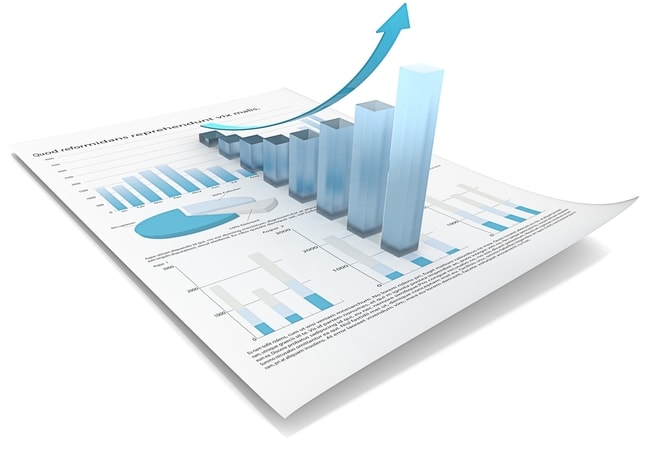Factors to Consider When Using Chicago Writing Style
The Chicago writing style was created by the University of Chicago and is commonly used for academic writing in the fields of History, Humanities, Social, and Natural sciences. The style recommends two approaches of formatting references. These include the Notes and Bibliography and the Author-Date styles.
disciplines in humanities prefer the notes-bibliography style where citations are given in form of footnotes or endnotes alongside a bibliography. Disciplines that prefer the Author-Date style include the physical, natural, and social sciences; where parenthetical in-text citation of sources with a reference list is used. This article informs on the general guidelines and factors to consider when using the Chicago writing style; leaned on the note-bibliography approach.
The Differences Between the Notes and Bibliography System
Citations are given within the main text in footnotes and endnotes when using the notes and bibliography approach. Below are some of the differences between the use of notes and bibliography entries which are based on the order of names and the indentation of the entries.
- In the bibliography system, the entry starts with the authors last name, followed by the first, and the middle initial comes last. On the other hand, the note system begins with the first authors name, followed by the middle, then the last initial.
- The first line in the note system has one space indentation while a hanging indent is used in the bibliography, with right indentation of the successive lines of the entry.
- Bibliography entries are arranged in alphabetical order where as the notes are represented in numerals.

Factors to Consider when Using the Chicago Writing Style
The general factors related to overall format of a paper written in Chicago style include the margins, font type and size, line spacing in paragraphs, and indentation among others. Below are the basic formatting guidelines related to these factors.
- On all the four sides of the paper, the margins should be one inch.
- A font of 12 points in the Times New Roman is recommended.
- Lines in the text should be double-spaced except in block quotes, titles of tables, and captions for figures.
- Paragraph beginnings, bibliographic indents, and block quotes should be half inch indented.
- Entries for notes and bibliography should be single-space.
- The first page of the text should begin with number one (1.), placed at the header. The page numbers should proceed up to the end of the bibliography.
- Sub-headings are allowed in longer publications.
Structure and Layout of a Chicago Paper
The format of the paper should start with the title or cover page, body/main text, appendix, endnotes when relevant, and bibliography.
1. The Title/Cover Page
The layout and structure of the title page in Chicago writing style should be as follows:
- The title should be centered almost half-way down the first page of the paper.
- The title line should end with a colon, then a subtitle follows, if the paper has a relevant subtitle.
- Directly under the title, the name of the scholar should be centered.
- Underneath the scholar’s name is the supervisor’s or tutor’s name, title of the course, and the due date, all in separate lines.
- The title should not be bolded, underlined, or italicized.
- The cover page should not be numbered.
2. In-text Citation in the Body of the Text
The Chicago writing style offers in-text citation guidelines depending on the type of citation style adopted in the paper. The author-date uses parentheses to enclose sources. When using the notes and bibliography style, citations are placed in footnotes or endnotes where superscripts are placed within the text to guide the reader.
3. The Bibliography
On a new page at the end of the paper, the title ‘Bibliography’ should be typed at the top, using the Times New Roman font 12 points. The title should not be emboldened. Hanging indent and proper formatting for each reference material should be used. The first line of the bibliographic entries should start on the margin of the paper, while intending subsequent lines. All sources cited in a particular paper are listed alphabetically by the author’s last name in the bibliography. The title or a descriptive phrase may be used for entries where the name of the author is missing.
Basic Elements to Consider in Chicago Bibliography Entries
The author, title, and publication elements are the basics to consider when making entries for cited sources in a bibliography.
- Name(s) of the Author(s): The name of the author is inverted; with the last name appearing before the first, separated by a comma.
- Title: For books and journals, the titles are italicized while those of sources such as articles or poems are enclosed in quotation marks.
- Publication Date: The publication date is inserted after the name of the publisher.
- Punctuation Marks: All the main components of a bibliography are separated by periods.
4. Names and Acronyms
The first time the name of a person or agency is referenced in the paper, they should be written in full. However, after the full name of the agency, its acronym should be included in parentheses. After the first mention of the person or agency, the persons last name or acronym of the agency may be used subsequently. Acronyms should not be used at the beginning of a sentence.
5. Footnotes and Endnotes
At the bottom of the page where the citation has been done, footnotes should be written while the endnotes are written after the text of the paper on a separate page. Superscripts are placed at the end of the sentence bearing the reference after all punctuation marks. The Times New Roman 12 font is used when typing all notes. Numbers within the notes should be standard, with a full stop at the end. The first line of the footnote is indented half-inch off the margin, with the rest of the lines being left flushed. The notes should be single-spaced and only Arabic numerals should be used. For sources cited more than once, shortened citation should be used. A semicolon should be used to separate multiple sources cited in one note.
6. Block Quotes
Block quotes are used to represent prose quotations that are five or more lines long, or quotations in poetry that are more two or more lines. Blank lines are used to separate block quotes from the rest of the text instead of quotation marks. These quotes are not double-spaced like the other parts of the text.
7. Use of Numbers in a Chicago Paper
For numbers lower than 100, the Chicago writing style recommends that they be written in words rather than numerals. Only when referring to specific measurements are numeric values accepted. The style discourages the use of numbers at the beginning of a sentence. Instead, rewriting is recommended to make sure that the number appears elsewhere within the sentence.
8. Tables and Figures
Tables and figures are inserted directly under where it is discussed. Under the image or table, the caption if left flushed. Single spacing is used for caption and the tables or figures should be labeled consecutively.

Citing Different Sources in Chicago Style
The format to use in referencing depends on the type of source. The following are some of the common sources and their format of referencing:
1. Electronic Sources
Referencing of electronic sources should follow the same format as the fixed-media sources, books being one of them. If the Digital Object Identifier (DOI) for the source is provided, it should appear at the end of the entry. However, if the DOI is not provided, a direct URL should take its place in the entry. In case there are restrictions to access the database, its name or a stable URL should be used instead.
For sources that are viewed online but do not have a date of publishing, the dates they were accessed should be provided. Because websites are prone to change, academic tutors may recommend the provision of access dates, which should be placed before the URL in the reference entry. The title for a website should be written in Roman capitals. For the year of publication element, one should use the last-modified or the date it was accessed. The last name of the author comes first and the elements are separated by a period in the bibliography citations.
2. Blogs
The blog title should be written in capitalized italics with the word (blog) in parentheses if it has not been factored in the title. The website or blog should be included in the bibliography only if it is cited frequently, its among the works important sources, of if the instructor says so.
3. Images and Photographs
When citing photographs and images, it is very important to gather as much information as possible because in most cases, these images may not indicate the title, date, or the photographer. One must therefore visit the website that hosts the photograph rather than relying on google images.
4. Online Accessed Periodicals
Periodicals accessed online can also be cited as sources in academic writing. These include online editions, databases, electronic journals, or e-magazines. A DOI or URL must be provided to guide the reader in retrieving the source from its original location. If no issue number is provided for the journal, only the volume number should be included. The significance of volume and issue numbers is that they aid in tracing journals. The same format as electronic journals and magazines is used for the print ones except the URL and the date of access.
In most cases, there are no page numbers in online resources because the references are mainly websites or digital media projects that can neither be paginated nor printed.
5. Theses and Dissertations
The Chicago writing style recommends slightly variant information when creating notes and bibliographies for theses and dissertations. These may not be published anywhere and can only be retrieved from their databases. Stable URL for the documents is included in the notes where as the suggested number of identifications given by the database is contained in the bibliography.
6. Periodicals and Books in Print Form
Because their formats may not change over a long period, books are mostly the easiest references to cite. In the Chicago style manual, there is great similarity in format for almost all sources.
7. Book Citation
The format followed when citing a book and making a bibliographic entry is based on the number of authors involved, whether the book is edited or not among other factors.
8. Citing a Book with a Single Author
The Chicago manual recommends the following format for books authored by one person:
In the footnote system, the authors first name followed by the second, book title in italics and the first letter in all important words capitalized, then the city, publisher, and the year of publication are enclosed in parentheses in that order. If deemed relevant, the page number is placed at the end of the entry. The abbreviation “Ibid” is used in place of the name of the author and the title of the book when referring to a text a second time immediately after the first time.
In the bibliographic entry, the basic format is: Author’s last name, First name. Title. City: Publisher, Year. The punctuation marks must be inserted as demonstrated in the format.
- Books with Multiple Authors
The following is the recommended Chicago format for a book with multiple authors.
In footnotes, for books with two or three authors, each author should be listed in the order they appear on the book’s title page. If more than three authors are involved, only the name of the first author should be listed, followed by the words “and others” or “et al.” The recommended format in the bibliography is: Last name, First name, and First name Last name. Title. City: Publisher, Year. Correct punctuation must be observed. The names of all authors should be included in the bibliographic citation, contrary to the note system.

9. Journal Articles
The Chicago style proposed format for journal articles in the footnote is: The authors first and last names in that order, “title of the article, journal title, volume, and issue number. Only the article title and the page number should be written in subsequent refences to the same text. The bibliographic system basic format is: Last name, First name. “Article Title.” Journal Title Volume, Issue no. (Year): page rang, all organized and punctuated as indicated in the format.
The guidelines given in this article, the basic Chicago style rules, the factors to consider when formatting a paper in Chicago style can be of great help to anyone seeking to present a professionally written paper. However, in case of any difficulties, it is important to look for Chicago style writing help from Chicago style writing experts. These are the experienced academic writers who have specialized in offering Chicago writing services to scholars, researchers, and all interested stakeholders in the relevant fields. One can opt to visit their physical location to buy Chicago writing services, or contact them through their online websites.
In most cases, the best Chicago style paper writing service is just a click away, as long as both parties have access to a computer and adequate supply of internet. The modern technology has simplified the writing process such that a client can interact with the professional Chicago writers. One may prefer to hire a person to format their work in Chicago writing style, or they may do the formatting themselves, then pay the Chicago writing experts to edit the paper in Chicago style. In either way, one must remember that, submitting a correctly formatted, proofread, and edited document is a personal responsibility in academics. Therefore they must work hard to ensures all the requirements are met as per the Chicago writing style.





